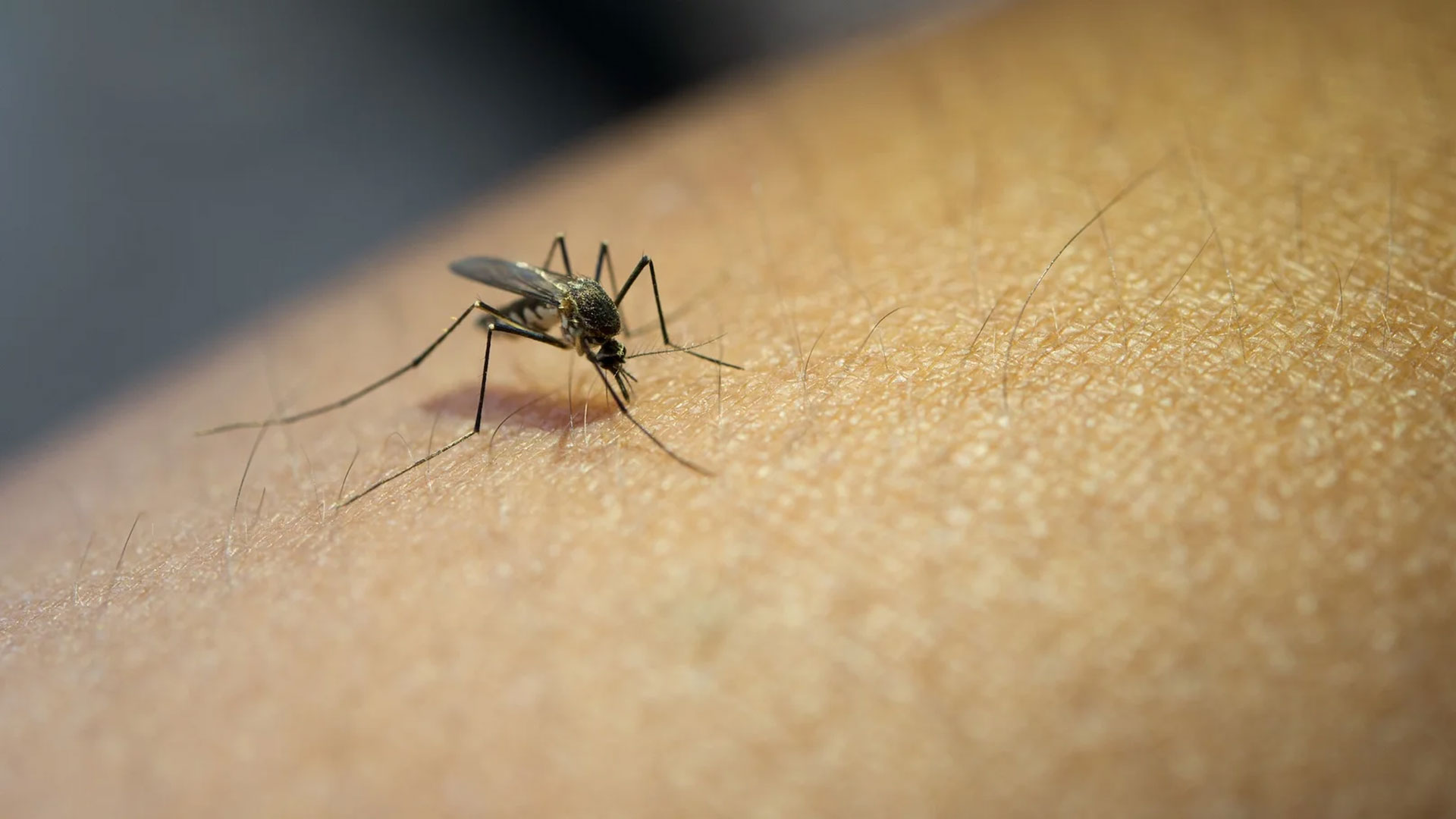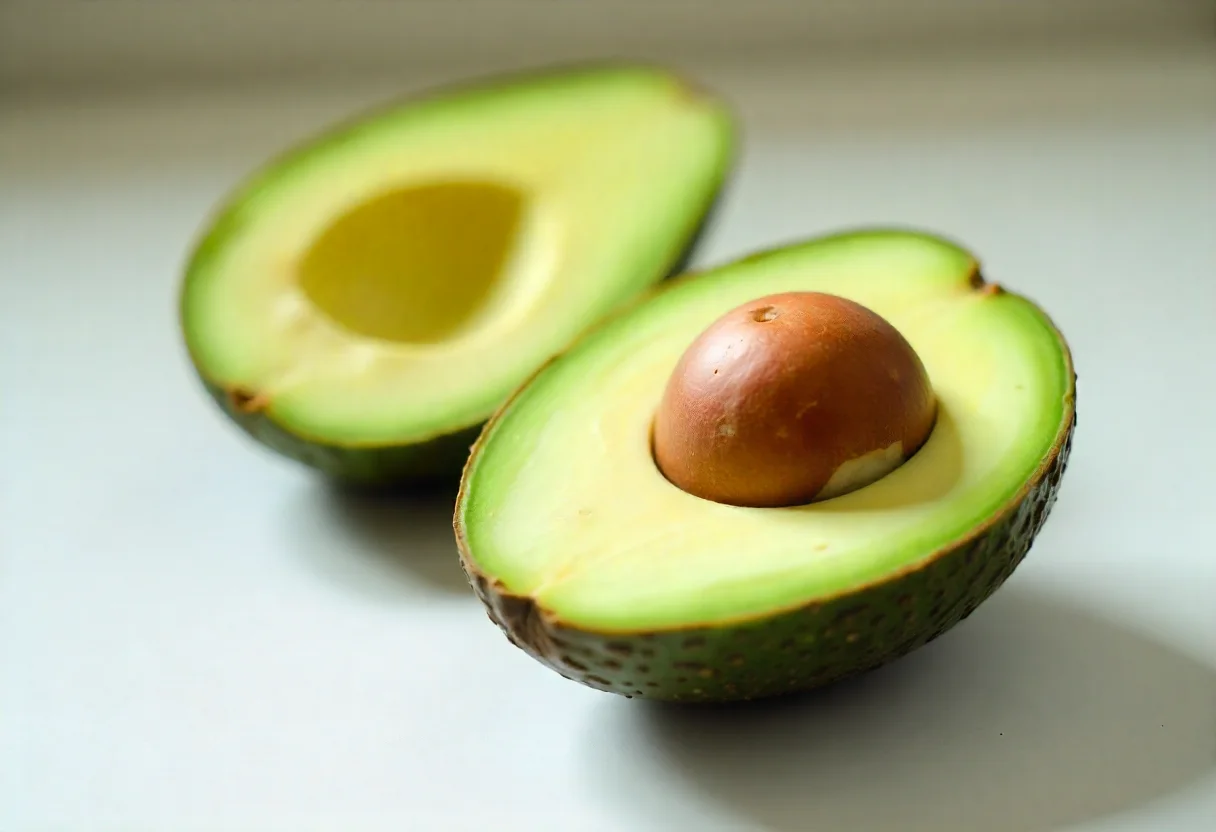"While the negative impact of the Covid-19 pandemic on the healthcare system, the economy, and other areas has not fully recovered, the rapid spread of avian flu in the United States has raised concerns about a new pandemic."
Title:
| Introduction
| What is avian influenza?
| History of avian influenza
| Risk factors for avian influenza
| How to swab for avian influenza?
| Symptoms
| How is avian influenza spread?
| Patient management
| The role of vaccination in avian influenza
| What makes this outbreak different?
| Could the avian flu epidemic turn into a pandemic?
| What kind of precautions can be taken?
| What are the most accurate and up-to-date news sources about avian influenza?
Introduction
The first case of A(H5N1) avian influenza associated with an outbreak in dairy cows in the United States was reported in Texas on April 1, 2024. This is probably the first human A(H5N1) infection from a cow in the world. A second human case associated with the dairy cow outbreak was detected in Michigan on May 22, 2024. A third human case was identified in Michigan on May 30, 2024.
In animal health, the U.S. Department of Agriculture (USDA) reports that cases of A(H5N1) virus infection have been confirmed in 92 dairy herds in 12 U.S. states, and the number of infected herds continues to grow. "Initial tests have not found any changes that would make the virus more infectious to humans," the USDA reports. Still, the widespread occurrence of H5N1 in mammals has reignited concerns that it could evolve to be more easily transmitted between humans.
Based on currently available information, CDC's current assessment of the human health risk of A(H5N1) avian influenza to the U.S. population remains low. All three sporadic cases had direct contact with infected cattle.
Meanwhile, sporadic human cases of H5N1 avian influenza continue to occur outside the United States. In total, there have been approximately 30 confirmed human cases of H5N1 infection worldwide between January 2022 and May of this year, including 7 deaths. Australia reported its first human case in May, involving a different strain of H5N1 virus unrelated to the U.S. dairy cow outbreak. A child exposed while traveling in India had a severe infection but recovered.
What is avian influenza?
Influenza viruses are part of the Orthomyxoviridae family and are single-stranded RNA viruses. Like other RNA viruses, influenza viruses have a rapid mutation rate. There are four main types of influenza virus: A, B, C and D. Type A viruses are known to infect a wide range of birds and mammals, while other types have a more restricted host range.
Influenza A viruses (IAV), which include all avian influenza viruses, have eight distinct genomic segments ranging in size from 890 to 2341 nucleotides. Avian influenza is a viral infection that can infect not only birds but also humans and other animals. Most forms of the virus are restricted to birds.
In some respects, the dynamics of human influenza in humans and avian influenza in birds are similar. In humans, children move locally and adults move over long distances; and in birds, domestic birds move through trade and wild species through long-distance migration. However, diversification is a common feature of avian IAVs, especially in wild bird populations, in contrast to human IAVs. As a result, avian IAVs are much more diverse and generate new strains more easily than more specialized human viruses.
H5N1 is the most common strain of avian influenza. H5N1 occurs naturally in wild waterfowl, but can easily spread to domestic poultry. It is fatal to birds and can easily affect humans and other animals who come into contact with a carrier.
HPAI A(H5N1) virus infection has been reported in a wide range of land and marine mammals in many countries, typically resulting in neurological disease symptoms and death. HPAI A(H5N1) virus infection has been reported in wild mammals such as foxes, bears, seals, and sea lions, and in domestic animals, including pets such as cats and dogs, farm mink and foxes, and farm animals such as goats and cows. In the United States, the HPAI A(H5N1) virus has been reported in mammals in more than 20 states.
Human infections with HPAI A(H5N1) virus are rare, probably due to the low frequency of contact between the two populations, but transmission from domestic birds to humans does occur, particularly in live bird markets in Asia. According to the World Health Organization's reliable source, H5N1 was first detected in humans in 1997 and killed about 60 percent of those infected.
Because the receptors to which the virus binds in the upper respiratory tract of birds are less common in the upper respiratory tract of mammals, mammals are largely safe. However, some experts are concerned that H5N1 could pose a risk of becoming a pandemic threat to humans.
Understanding the overall global patterns of IAV epidemiology in birds will help elucidate the origins of past pandemics and may help predict future events.
History of avian influenza
One hundred years ago, in 1918, the "Spanish flu" pandemic caused by an H1N1 influenza virus contributed to an estimated 50 million deaths. Since then, three other human IAV pandemics have occurred: H2N2 (Asian flu) in 1957, H3N2 (Hong Kong flu) in 1968, and H1N1 (swine flu) in 2009. A century later, with the advent of sequencing technology and related phylogenetic methods, we know much more about the origins, evolution, and epidemiology of influenza pandemics.
Severe non-bacterial outbreaks with high mortality rates in domestic birds have been recorded since the late 1800s. In the nineteenth and early twentieth centuries, these outbreaks were called "fowl plague," and in 1955 Schafer established that "fowl plague virus" (FPV) was indeed a strain of IAV with internal antigens similar to human and swine influenza viruses.
HPAI A(H5N1) viruses are panzootic in wild birds, leading to outbreaks in commercial poultry and backyard flocks, and have spread to infect wild land and marine mammals and domestic animals.
First identified in chickens in Scotland in 1959 and in geese in southern China and Hong Kong in 1996, H5N1 is a strain of avian influenza A virus that causes a highly contagious and severe respiratory disease in birds. The first known human cases were reported in 1997 in China and Hong Kong, where 18 people became infected through animal-to-human transmission, six of whom died. The outbreak was linked to the transport of infected poultry. Since then, 19 countries have reported more than 860 H5N1 human infections to the World Health Organization between 2003 and 2022. Of these, 53% were fatal.
Humans have an avian version of the receptor in their eyes, which explains why they can develop conjunctivitis, typically a mild illness. In 2003, hundreds of people developed eye infections during an outbreak of H7N7, another highly pathogenic avian influenza virus, in poultry flocks in the Netherlands. There was some evidence of human-to-human transmission, and one veterinarian was reported to have died during the outbreak.
In 2004, an extremely dangerous strain of avian influenza emerged in a flock of chickens in Texas. The outbreak contained an H5N2 virus (not H5N1 avian influenza). The outbreak ended in April 2004. No human infections were detected.
In Indonesia in 2006, bird flu spread to eight members of one family, seven of whom died. It is not clear how this happened. The family members probably had similar exposure to infected birds. They may also have shared genes that made them more susceptible to the virus. But random contact does not seem to be the case.
Avian influenza is mostly a threat to birds and does not spread easily between humans, but there was a major outbreak of avian influenza in humans in 2014. The few cases of human-to-human transmission during the 2014 outbreak were among very close contacts, such as a mother who contracted the virus while caring for her sick baby.
The current clone of the virus, designated 2.3.4.4.4b, was first reported in the US in January 2022 and has spread globally, infecting not only birds but dozens of mammalian species, including cats, dogs, tigers, bears, seals and dolphins. Since then, the Centers for Disease Control and Prevention (CDC) has reported outbreaks affecting 58 million commercial poultry and backyard flocks in 47 states. As of May 2024, it has affected more than 1,000 bird flocks and more than 200 mammals in 48 states.
When minks began dying on a large farm in the Galicia region of northwestern Spain in October 2022, veterinarians initially thought the culprit might be SARS-CoV-2, which had hit mink farms in several other countries. But laboratory tests soon identified H5N1 as the guilty party. Authorities immediately placed workers at the farm under quarantine restrictions. More than 50,000 mink at the farm were killed and their carcasses destroyed.
Four people have tested positive in the U.S. since the virus emerged. In the first case, in 2022, the worker helped cull infected poultry on a farm. All three patients this year were exposed to dairy cows. Two reported only conjunctivitis or pinkeye, while the third also experienced upper respiratory symptoms. No one has died from the virus in the U.S., according to federal officials, but deaths have been reported internationally.
Risk factors for avian influenza
For all influenza types, there are some common risk factors that affect the prognosis of the disease. These include neurological, hepatic, renal, pulmonary, and chronic cardiac disease; diabetes mellitus; severe immunosuppression; individuals over 65 years of age; pregnancy; children under 6 months of age; and morbid obesity.
Risk factors that increase the risk of exposure to avian influenza are:
- Poultry farmers
- Travelers visiting affected areas
- People exposed to infected birds
- Someone who eats undercooked poultry or eggs
- Healthcare workers caring for infected patients
- A household member of an infected person
How to swab for avian influenza?
Testing of asymptomatic persons for HPAI A(H5N1) virus infection is not routinely recommended.
Nasopharyngeal and oropharyngeal swabs, conjunctival swabs if conjunctivitis is present, and lower respiratory tract samples (endotracheal aspirate or bronchoalveolar lavage fluid), if severe respiratory symptoms are present, should be collected from persons suspected of having HPAI A(H5N1) virus infection as soon as possible after illness onset or as needed.
Symptoms
The symptoms and prognosis of a patient with avian influenza infection depend on the severity of the infection, the level of transmission, and the type of influenza virus that causes it.
In mild cases, symptoms include cough, sore throat, eye redness or conjunctivitis, fever, runny nose, fatigue, myalgia, arthralgia, headache, and diarrhea-like gastrointestinal symptoms.
In moderate to severe cases, shortness of breath, confusion, and seizures may be observed.
In more serious cases, complications such as pneumonia, respiratory failure, acute respiratory distress syndrome, multiple organ failure, sepsis, and meningoencephalitis may occur.
How is avian influenza spread?
The infectious period for bird cases is considered to start 72 hours before the onset of symptoms.
Although we do not yet understand all the pathways, most transmission occurs through bird poop.
The virus can be spread by wild bird droppings in farm ponds or inside buildings, aerosolized and airborne, by outdoor animals drinking raw milk, by animals eating infected birds, by farm workers dragging sawdust and dirt from wetlands that can carry the virus, by carrying infected equipment around the farm.
However, even if migratory birds might be good vectors, transmission patterns indicate that circulation is partially maintained through the trade of infected domestic birds. For example, the long-distance expansion of H5N1 HPAI viruses in 2004 was found to be caused by human-directed movements of domestic poultry, and both LPAI and HPAI virus circulation was found to be driven by human activities in China. Therefore, it is clear that the worldwide spread of avian IAV results from the synergy between the trade of infected domestic birds and wild bird movement through migratory flyways.
Since domestic ducks can share the same habitat, water, and food as wild waterfowl, their presence and concentration are thought to make them key intermediate hosts between wild birds and poultry, and consequently, they play an important role in the emergence and circulation of HPAI strains, especially in Asia. Agricultural practices, such as the release of high quantities of juvenile ducks in paddy fields prior to the arrival of the wild birds, might further exacerbate transmission and circulation of the virus between wild and domestic animals.
Health officials say everything is safe except raw milk, as long as ground beef and eggs are thoroughly cooked. The cooking process removes any traces of the virus that may have been present in egg yolks or ground beef after infected dairy cows were sent to the market for slaughter.
Population immunity to clade 2.3.4.4b A(H5N1) viruses in the United States has been shown to be extremely low or non-existent. Antibody levels remained low regardless of whether participants had received the seasonal influenza vaccine, suggesting that the seasonal influenza vaccine does not induce antibodies against A(H5N1) viruses. This suggests that pre-existing immunity to this virus is negligible and that a large proportion of the population would be vulnerable to infection with this virus if it became easily transmissible and spread from person to person. This finding is not unexpected because A(H5N1) viruses have not spread widely in humans and are very different from current and recently circulating seasonal human influenza A viruses.
People catch bird flu by close contact with an animal’s fluids, such as saliva, respiratory droplets, or droppings (poop).
In the 2014 outbreak, some people caught H5N1 from cleaning or plucking infected birds. There were reports in China of infection by breathing in viral particles in live bird markets. It's also possible that some people were infected after swimming or bathing in water contaminated with the droppings of infected birds. And some infections have occurred in people who handle fighting cocks.
During the current outbreak, seven cases of H5N1 2.3.4.4b associated with poultry exposure have been reported to date - one in the United Kingdom, one in the United States, one in Ecuador, and two in Spain. Four of these people had no respiratory symptoms, while three developed severe illness and one died. However, no human-to-human transmission has been reported.
The findings highlight the potential for A(H5N1) viruses to cause infection in humans following ocular exposure to the virus. Tear fluid provides an opportunity for the virus to spread from the eyes through the tear ducts to the nose/respiratory tract and vice versa. The findings also underscore the importance of eye protection when working around infected animals or potentially contaminated environments or liquids/surfaces, such as raw milk. This study, the first to evaluate the ability of clade 2.3.4.4b A(H5N1) viruses to cause disease following a non-respiratory entry portal, builds on close to two decades of CDC research investigating the role of infection via the eyes in the spread of influenza viruses and the progression of disease.
Patient management
Hospitalized patients with a confirmed, probable, or suspected case of human infection with HPAI A(H5N1) virus are recommended to begin antiviral therapy with oral or enteric oseltamivir as soon as possible, regardless of the time since illness onset. Clinical benefit is maximized when antiviral therapy is initiated early, especially within 48 hours of illness onset. Antiviral treatment should not be delayed pending laboratory test results.
Different strains of avian influenza can cause different symptoms and treatments may vary. Isolation should be practiced to prevent the spread of the virus to others. Active surveillance should be performed daily for up to 10 days after the last unprotected exposure or during post-exposure antiviral administration.
The standard recommended dosage for antiviral prophylaxis (also called neuraminidase inhibitors) is oseltamivir 75 mg once daily. This should be given as a 10-day cure and can be started up to 7 days after the last day of exposure. The treatment should be started as soon as possible. Dose adjustment may be required for those with comorbidities such as renal impairment.
Recommendations for monitoring and chemoprophylaxis of close contact with infected persons differ from those for persons who meet the criteria for exposure to birds or other animals. For post-exposure prophylaxis of close contact with a person with HPAI A(H5N1) virus infection, twice-daily oseltamivir (treatment dose) is recommended instead of a once-daily pre-exposure prophylaxis dose.
The virus that causes the human form of influenza can become resistant to amantadine and rimantadine, the two most common antiviral drugs. These drugs should not be used to treat the illness.
Your doctor may place you on a breathing machine if you develop a severe infection.
The role of vaccination in avian influenza
The results of a recent study conducted by a team from the University of Georgia in the United States indicate that vaccines remain an effective means of preventing the potential spread of H5N1 and other avian influenza.
In 2007, the FDA approved the first vaccine to prevent the transmission of a strain of avian influenza (H5N1) to humans. However, this vaccine has not been made publicly available commercially.
Live attenuated influenza vaccines (LAIVs) are known to induce a higher level of immune response than inactivated vaccines, activating not only antibody production but also mucosal and cellular defenses.
Work is also ongoing on virus-like particle (VLP) vaccines and messenger RNA (mRNA) vaccines. Although clinical trial data for VLP vaccines for avian influenza in humans is limited, results from studies in mice and ferrets are encouraging. Additionally, mRNA vaccines against H5N1 and H7N9 avian influenza subtypes have demonstrated the capacity to elicit a rapid and robust immune response in mice and ferrets. While data in humans are limited, the results of a phase 1 study of an H7N9 mRNA vaccine in healthy humans have been encouraging.
Although there is no H5N1 vaccine for cows, it is claimed that a vaccine could be rapidly developed by modifying the swine flu vaccine, and it is anticipated that this cow vaccination could provide secondary protection to dairy workers.
The nationwide vaccination program initiated in China in September 2017 serves to illustrate the significance of vaccination in the fight against the pandemic. Recombinant H5 and H7 bivalent inactivated vaccines were used, post-vaccination immunization was tested and surveillance continued. The overall immunization rate after vaccination was over 80% (target was 70%). Only a handful of samples from birds or their environment have tested positive for H7N9 (11 out of more than 80,000 samples in December 2017), and in the timeframe expected for the sixth wave of human infections (September 2017-June 2018), there are only three human cases of H7N9, down from more than 700 the previous year. The low number of positive poultry samples in winter 2017/2018, and the almost complete absence of the sixth seasonal outbreak of zoonotic infections, suggest that the mass poultry vaccination policy has been successful in reducing the prevalence of H7N9 viruses and the risk of infection.
The role of vaccination in avian influenza
The results of a recent study conducted by a team from the University of Georgia in the United States indicate that vaccines remain an effective means of preventing the potential spread of H5N1 and other avian influenza.
In 2007, the FDA approved the first vaccine to prevent the transmission of a strain of avian influenza (H5N1) to humans. However, this vaccine has not been made publicly available commercially.
Live attenuated influenza vaccines (LAIVs) are known to induce a higher level of immune response than inactivated vaccines, activating not only antibody production but also mucosal and cellular defenses.
Work is also ongoing on virus-like particle (VLP) vaccines and messenger RNA (mRNA) vaccines. Although clinical trial data for VLP vaccines for avian influenza in humans is limited, results from studies in mice and ferrets are encouraging. Additionally, mRNA vaccines against H5N1 and H7N9 avian influenza subtypes have demonstrated the capacity to elicit a rapid and robust immune response in mice and ferrets. While data in humans are limited, the results of a phase 1 study of an H7N9 mRNA vaccine in healthy humans have been encouraging.
Although there is no H5N1 vaccine for cows, it is claimed that a vaccine could be rapidly developed by modifying the swine flu vaccine, and it is anticipated that this cow vaccination could provide secondary protection to dairy workers.
The nationwide vaccination program initiated in China in September 2017 serves to illustrate the significance of vaccination in the fight against the pandemic. Recombinant H5 and H7 bivalent inactivated vaccines were used, post-vaccination immunization was tested and surveillance continued. The overall immunization rate after vaccination was over 80% (target was 70%). Only a handful of samples from birds or their environment have tested positive for H7N9 (11 out of more than 80,000 samples in December 2017), and in the timeframe expected for the sixth wave of human infections (September 2017-June 2018), there are only three human cases of H7N9, down from more than 700 the previous year. The low number of positive poultry samples in winter 2017/2018, and the almost complete absence of the sixth seasonal outbreak of zoonotic infections, suggest that the mass poultry vaccination policy has been successful in reducing the prevalence of H7N9 viruses and the risk of infection.
What makes this outbreak different?
The researchers highlighted two key differences with this outbreak: The virus seems better adapted to infecting wild birds, and it can spread in some parts of the world and at unprecedented times of year.
Usually, outbreaks end on their own as wild birds become immune and stop spreading the virus, but in the current outbreak, this process is taking longer.
The key difference between this pandemic and previous ones is the increase in global average temperatures, especially since this pandemic began. Last year was the warmest on record, and this year appears to be following a similar trajectory. As the pandemic continues and spreads, there is growing concern about the risks to people and the impact of warmer and more extreme weather events in exacerbating this and future pandemics.
Wildlife biologist Diann Prosser of the US Geological Survey's Eastern Ecological Science Center said the virus has raised many concerns, not only because of its impact on human health and agriculture but, also because it is killing wildlife such as seabirds, birds of prey, and marine mammals.
Last fall, Prosser co-authored a study showing that changing climate patterns and extreme weather events closely parallel the "unprecedented global spread of highly pathogenic avian influenza.
Prosser said there is no single answer to the link between climate change and the avian flu outbreak in the U.S., and more studies are needed. “On the one hand, flu particles may break down faster in warmer conditions, which could reduce their ability to spread. But the virus could spread more easily if heat waves cause changes in food supplies or immune stress in humans or animals.”
Ursula Hofle, a researcher in avian pathology and infectious diseases of wild birds at the University of Castilla-La Mancha in Spain, said: "It's affecting species we haven't seen before, such as large scavengers, vultures, and some endangered species. And it is destroying entire colonies of some species. We expect a major impact on biodiversity.”
"The other big change we see in this virus, which makes it very interesting but also potentially dangerous, is that it can persist longer. We have outbreaks in the summer. We're seeing outbreaks in Spain in August, which is unprecedented, which shows that the virus is changing in a lot of ways that we don't know about yet."
Maurice Pitesky, associate professor of epidemiology of cooperative extension, poultry health, and food safety at the University of California Davis, said the warming climate is not the only thing changing the environment. Human encroachment on agriculture and wilderness could be an even bigger potential factor. As farmland expands and droughts dry up existing wetlands, farms are now increasingly located near wild areas, especially wetlands.
"We are producing more poultry than ever before, and the more poultry we produce, the less space there is for wild waterfowl and the less habitat there is for animals to roost and feed." Pitesky said. If these wild areas overlap with domestic poultry and cattle farms, the potential for further disease transmission increases.
Pitesky stated that 95% of California's natural wetlands have been lost due to various reasons, mainly farming. Clearly, there are benefits to feeding 8 billion (people) but an unintended consequence is that waterfowl are using the suboptimal habitat.
According to a study published earlier this year by Tufts University researchers Jonathan Runstadler and Wendy Puryear, the outbreak is unique in its global spread and the number of bird and mammal species it has infected. "While the risk to humans is low, this unexpected outbreak demonstrates the need for continued vigilance and further study." the study said.
The U.S. has experienced outbreaks of avian influenza in the past, but this outbreak is longer lasting and more widespread. Flocks of domestic poultry in commercial operations or backyards and farms have been infected in every state except Louisiana and Hawaii, including more than 5.9 million birds since May 1. This scale- and related concerns- are reflected in egg prices, renewed warnings to cook ground beef and eggs thoroughly, and extraordinary measures dairy and poultry farmers have been asked to take to prevent the spread. Research suggests that the prolonged presence and spread of the virus increases the risk of genetic mutations that could make it easier to pass from animals to humans and between humans. "The longer the virus is around, the more likely it is to change," said Lenoch, who heads the federal program responsible for tracking the virus in wild birds. In previous outbreaks, wild birds were often exposed to the virus and carried it without showing symptoms, Lenoch said. With the current strain, wild birds get sick and die in large groups.
Could the avian flu epidemic turn into a pandemic?
For avian influenza viruses to cross the species barrier and become pandemic, they must become infectious among humans and be able to replicate efficiently in humans. Although human-to-human transmission of H5N1 is rare, it is not unprecedented for influenza strains to evolve, change their epidemiological habits, and cause human infections.
Although H5N1 has been circulating among birds and poultry in various parts of the world for years, recent outbreaks have raised alarm bells in the scientific community because the virus appears to be spreading to previously unreachable places.
Experts explain that the term highly pathogenic avian influenza refers to the activity of the virus in birds, and the CDC continues to rate the risk to most humans as low. However, the outbreak of H5N1 in farm animals in the US has raised concerns about the pandemic potential of the virus.
If strict measures are not taken to prevent repeated transmission of the virus between wild and domestic animals, the possibility of errors in replication due to the spread of large quantities of the virus could increase the risk to humans.
In a speech on February 8, WHO Director-General Tedros Adhanom Ghebreyesus said: "H5N1 has been widespread in wild birds and poultry for 25 years, but its recent spread to mammals needs to be closely monitored. WHO currently considers the risk to humans to be low. Since 1996, when H5N1 first emerged, we have seen only occasional and sporadic transmission of H5N1 to and between humans. But we cannot assume that this will continue, and we must be prepared for any change in the scenario.
The European Center for Disease Prevention and Control published a report on April 3 discussing the possible drivers of an avian flu pandemic. The report noted that viruses continue to evolve and said: "If avian A(H5N1) influenza viruses gain the ability to spread effectively among humans, large-scale transmission could occur due to lack of immunity to H5 viruses in humans."
What kind of precautions can be taken?
- Avoid unprotected exposure (without respiratory or eye protection) to sick or dead animals, including wild birds, poultry, other domestic birds, and other wild or domestic animals (including cows).
- Avoid exposure to materials touched by or in close proximity to animal feces, birds, or other animals with suspected or confirmed A(H5N1) virus.
- People who have work-related contact with infected or potentially infected birds or other animals should be aware of the risk of exposure to avian influenza viruses and should take appropriate precautions. People should wear appropriate and recommended personal protective equipment when exposed to infected or potentially infected animals.
- Personal protective equipment includes properly fitted non-ventilated or indirectly ventilated safety glasses, disposable gloves, boots or boot covers, NIOSH Approved particulate respirator (e.g., N95® filtering facepiece respirator, ideally fit-tested), disposable liquid-resistant coveralls, and disposable head cover or hair cover.
- The CDC recommends that dairy workers and others at risk wear personal protective equipment (PPE) and take other precautions.
- Lactating dairy cattle must now be tested for the H5N1 avian influenza virus prior to interstate travel.
- Raw milk should not be drunk. Pasteurization kills A(H5N1) viruses and pasteurized milk is safe to drink.
- Consumption of properly cooked poultry or eggs from infected birds will not transmit avian influenza, but eggs should never be served runny. Meat is considered safe if cooked to an internal temperature of 73.9ºC.
- If post-exposure antiviral prophylaxis is indicated, it should be initiated as soon as possible after exposure.
- Your doctor may recommend you get a flu vaccine. If you get both bird flu and human flu at the same time, a new and possibly deadly form of the flu can develop.
- Practice good hygiene and wash your hands regularly.
What are the most accurate and up-to-date news sources about avian influenza?
The best way to learn more about ongoing outbreak information and statistics is from government agencies such as the CDC and FDA. Local news outlets also cover bird flu news.
The CDC publishes a summary of the H5N1 bird flu situation, including a map that shows current infections. The page is updated weekly.
CDC is using its flu surveillance systems to monitor for H5N1 activity in people.















